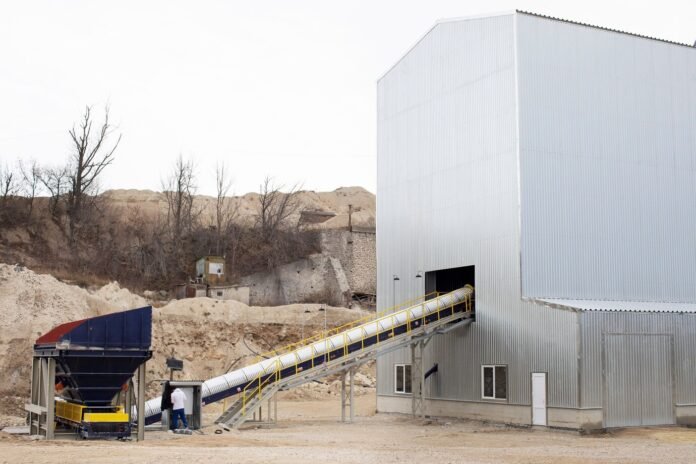In today’s data-driven world, businesses and individuals alike rely heavily on digital information. The loss of critical data—whether due to cyberattacks, hardware failures, or human error—can be devastating. Traditional backup solutions often restore entire systems or large datasets, which can be time-consuming and inefficient. This is where Granular Recovery Technology (GRT) comes into play. GRT allows users to recover individual files, emails, database entries, or application components without restoring an entire backup. This precision not only saves time but also minimizes downtime, ensuring business continuity. In this article, we will explore the key aspects of Granular Recovery Technology, its benefits, and its applications in modern IT environments.
1. What Is Granular Recovery Technology?
Granular Recovery Technology (GRT) is an advanced data restoration method that enables the recovery of specific, small-scale data elements from a larger backup set. Unlike traditional full-system recovery, which requires restoring an entire backup image, GRT allows administrators or users to extract only the necessary files, emails, database records, or even single application objects. This technology is particularly useful in virtualized environments, email servers, and databases where retrieving a single corrupted file or message is more efficient than rebuilding an entire system. By leveraging indexing and metadata, GRT identifies and isolates the exact data needed, significantly reducing recovery time and improving operational efficiency.
2. How Does Granular Recovery Technology Work?
Granular Recovery Technology operates by creating a detailed index of all stored data within a backup. When a recovery request is initiated, the system scans this index to locate the specific item—whether it’s an email from Microsoft Exchange, a single file from a virtual machine, or a record from a SQL database. The process involves parsing backup files at a granular level, allowing selective extraction without full restoration. For example, in virtual environments, GRT can mount a backup as a virtual disk, enabling users to browse and retrieve individual files. Similarly, in email systems like Microsoft 365 or Exchange, GRT can recover a single email or attachment rather than an entire mailbox. This precision is achieved through sophisticated algorithms that maintain data integrity while ensuring quick retrieval.
3. Key Benefits of Granular Recovery Technology
The adoption of Granular Recovery Technology offers numerous advantages over conventional backup restoration methods. First, it drastically reduces recovery time by eliminating the need to restore large datasets when only a small portion is required. Second, it minimizes downtime, ensuring that businesses can quickly resume operations after data loss incidents. Third, GRT enhances storage efficiency since organizations do not need to maintain multiple full backups for minor recovery needs. Fourth, it improves compliance and legal readiness by allowing precise retrieval of specific records or emails for audits or eDiscovery. Finally, GRT provides greater flexibility, enabling IT teams to address user requests for single-file recoveries without overburdening system resources.
4. Applications of Granular Recovery Technology
Granular Recovery Technology is widely used across various IT domains, proving its versatility in different scenarios. In virtualized environments, such as VMware or Hyper-V, GRT allows administrators to recover individual files from virtual machine backups without restoring the entire VM. In email systems, such as Microsoft Exchange or Office 365, it enables the recovery of specific emails, contacts, or calendar entries. Database administrators benefit from GRT by restoring single tables or records rather than entire databases. Additionally, cloud-based applications leverage GRT to retrieve lost or corrupted data without full-system rollbacks. Even in file servers and endpoint devices, GRT ensures that users can recover critical documents without lengthy restoration processes.
5. Challenges and Considerations in Implementing GRT
While Granular Recovery Technology offers significant advantages, its implementation comes with certain challenges. One major consideration is storage overhead, as maintaining detailed indexes for granular recovery requires additional space. Another challenge is compatibility, since not all backup solutions support GRT for every application or platform. Performance impact during backup indexing can also be a concern, especially in large-scale environments. Additionally, security and access control must be carefully managed to prevent unauthorized recovery of sensitive data. Organizations must evaluate their specific needs, choose GRT-enabled backup solutions wisely, and ensure proper configuration to maximize efficiency while mitigating potential drawbacks.
6. Future Trends in Granular Recovery Technology
As data volumes continue to grow exponentially, the demand for faster, more precise recovery solutions will only increase. Artificial Intelligence (AI) and Machine Learning (ML) are expected to enhance GRT by automating data classification and predicting recovery needs. Cloud-native GRT solutions will become more prevalent, offering seamless integration with SaaS applications like Salesforce, Google Workspace, and Microsoft 365. Blockchain-based indexing could further improve data integrity and auditability in granular recovery processes. Additionally, real-time recovery capabilities may emerge, allowing instant retrieval of lost or corrupted data without manual intervention. The evolution of GRT will play a crucial role in shaping the future of data protection and disaster recovery strategies.
Conclusion
Granular Recovery Technology represents a significant leap forward in data restoration, offering precision, speed, and efficiency that traditional backup methods cannot match. By enabling the recovery of individual files, emails, or database entries, GRT minimizes downtime, optimizes storage usage, and enhances business continuity. While challenges such as storage overhead and compatibility exist, the benefits far outweigh the drawbacks, making GRT an essential component of modern IT infrastructure. As technology advances, we can expect even more innovative developments in GRT, further solidifying its role in safeguarding critical data in an increasingly digital world. Organizations that embrace this technology today will be better prepared to handle the data recovery challenges of tomorrow.


